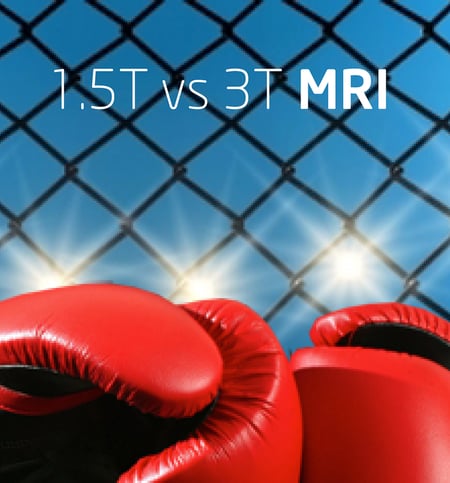Looking for diagnostic accuracy for breast images? According to Austrian and German researchers, look no further than 1.5T and 3T  breast MRI images. A recent study published in the May issue of the European Journal of Radiology shows that 1.5T and 3T breast MRI images deliver diagnostic accuracy of approximately 92%. In addition, comparably high numbers were also reached for specificity, sensitivity and negative predictive values.
breast MRI images. A recent study published in the May issue of the European Journal of Radiology shows that 1.5T and 3T breast MRI images deliver diagnostic accuracy of approximately 92%. In addition, comparably high numbers were also reached for specificity, sensitivity and negative predictive values.
Using MRI for breast imaging has many advantages. It provides exceptional soft-tissue contrast. Multiparametric sequences provide enhanced views of tumor vascularization and it provide simultaneous visualization of both breasts. Multichannel coils also help interpretations of 1.5T and 3T MR images.
"Our findings have several implications: [Breast MRI] is robust and can be performed with various protocols and scanner types," wrote the group led by Dr. Matthias Dietzel from University Hospital Erlangen. "The impact of sequences parameters and the scanner hardware is probably much lower than expected previously. While examinations at 1.5T are cheaper, 3T [breast MRI] has certain inherent advantages: most of all, the potential to reduce the dosage of contrast agents."
Much of the previous research that’s compared 1.5T and 3T breast MRI has focused on small patient groups, selected diagnostic criteria or specific clinical questions. As a result, the evidence is still limited regarding increasing the field strength from 1.5T to 3T.
Dietzel and colleagues reviewed images of 1,961 breasts from 982 patients over a consecutive 12-month period. Of the total, 215 (11%) were imaged on a 3-tesla system (Magnetom Tim Trio, Siemens) and 1,746 (89%) we imaged on a 1.5T scanner (Magnetom Tim Avanto, Siemens Healthineers). Both scanners had dedicated 16-channel breast coils and both protocols included contrast-enhanced T1-weighted imaging.
Two readers with expertise in breast MRI assigned a BIRADS category per breast. The standard of reference was with histopathological data or MRI follow-up of more than 24 months. The overall diagnostic accuracy was 91.9%, with 1.5tesla MRI at 92% and 3tesla MRI at 91.2%. Given the spread of only 0.8%, there was no statistically significant difference between the two strengths (p= 0.68). The other diagnostic parameters also didn’t show a statistically significant difference.
The researchers wrote, "As a secondary result our data provide evidence that high image quality can be achieved by any MRI unit. To achieve a high image quality, a standard clinical scanner equipped with a breast surface coil is sufficient. The only prerequisite is the optimization of the protocol for the specific scanner hardware (magnet, coil, etc.). This secondary result is important, as there has been much discussion in the past decades which protocol is necessary for accurate diagnosis."
There are so many exciting new technologies being developed and study findings regarding medical imaging, which benefits providers and patients. At Atlantis Worldwide, we’re happy to help you determine which technology is best for your hospital, clinic, practice or healthcare facility. Oftentimes, the best solution is a refurbished system, offering hefty warranties and great ROI. Talk to one of our experts today. Contact Us Today!
Some blogs you may have missed:
- More MRI Resources
- MRI Cold Head Tips
- Can Your MRI Be Hacked?
- Top 10 Tips for the Operating Theater Radiographer
- Radiologists, Healthcare and Social Media
- MRI System Safety, Roles and Responsibilities
Meet the author: Vikki Harmonay




